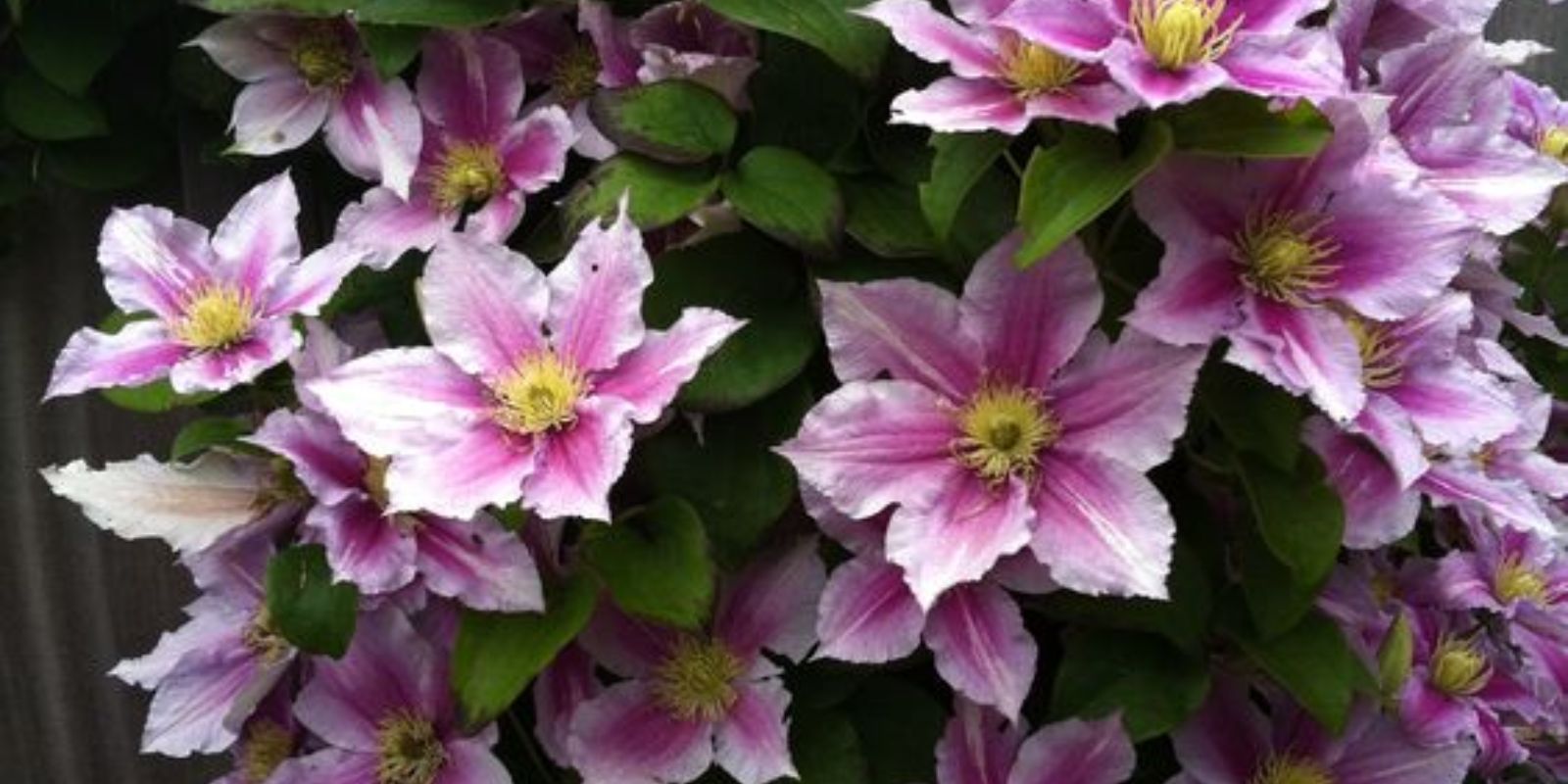Introduction
Clematis are renowned for their breathtaking blooms and versatility in the garden. With their stunning range of colors, shapes, and sizes, they can transform any space, whether climbing up a trellis, covering a wall, or cascading from a container. However, to enjoy a thriving clematis plant that produces a profusion of flowers, proper care and attention are crucial. This article provides comprehensive tips for growing and caring for clematis, ensuring you get the most out of these beautiful vines.
1. Choosing the Right Variety
Selecting Clematis Varieties
Clematis come in numerous varieties, each with its own unique growing requirements. To ensure success, choose a variety that suits your climate and garden conditions.
- Climate Considerations: Some clematis are more suited to specific climates. For instance, Clematis alpina and Clematis macropetala are ideal for cooler climates, while Clematis viticella and Clematis texensis are better for warmer regions.
- Bloom Time and Type: Clematis bloom in different seasons and styles. There are early bloomers, such as Clematis montana, mid-season varieties like Clematis viticella, and late bloomers like Clematis ‘Jackmanii’. Select varieties based on when you want them to flower and their growth habits.
2. Ideal Planting Location
Finding the Perfect Spot
Clematis thrive in specific conditions that help them flourish and produce abundant blooms.
- Sunlight Requirements: Most clematis varieties prefer a position where they receive morning sun and afternoon shade. This setup helps protect the plant’s roots from overheating while allowing the vine to bask in sunlight.
- Planting Near Structures: Plant clematis near structures they can climb, such as trellises, arbors, or fences. Ensure these supports are sturdy and can bear the weight of the mature plant.
3. Soil Preparation
Creating Optimal Soil Conditions
Clematis need well-drained, nutrient-rich soil to grow healthily and produce vibrant flowers.
- Soil Type: Use loamy, well-drained soil with a slightly acidic to neutral pH (6.0 to 7.0). If your soil is heavy clay or overly sandy, amend it with organic matter to improve texture and fertility.
- Adding Organic Matter: Incorporate compost or well-rotted manure into the soil before planting. This addition helps enhance soil structure and provides essential nutrients.
4. Planting Depth
Proper Planting Techniques
Planting clematis at the correct depth is crucial for robust growth and flowering.
- Planting Depth: Plant clematis deeper than they were in their nursery pots. The base of the plant should be buried about 2-3 inches below the soil surface. This deeper planting encourages stronger root growth and helps the plant better withstand fluctuations in temperature.
5. Watering Needs
Maintaining Proper Moisture Levels
Consistent watering is vital for clematis, especially during dry periods.
- Watering Frequency: Water clematis deeply and regularly, particularly during hot, dry spells. Ensure the soil remains consistently moist but not waterlogged.
- Avoiding Overwatering: To prevent root rot, avoid overwatering. Ensure the soil drains well and that water does not pool around the base of the plant.
6. Mulching for Moisture Retention
Benefits of Mulching
Mulching helps maintain moisture levels, regulate soil temperature, and suppress weeds.
- Applying Mulch: Apply a 2-3 inch layer of mulch around the base of the clematis. Use organic mulch such as wood chips, bark, or straw.
- Mulch Placement: Keep mulch away from the base of the plant to prevent rot. Ensure that it covers the soil but does not directly touch the stems.
7. Pruning Techniques
Understanding Pruning Needs
Pruning is essential for encouraging new growth and maximizing blooms. The timing and technique depend on the clematis type.
- Pruning Groups:
- Group 1: Early-blooming clematis, such as Clematis montana, should be pruned immediately after flowering to shape the plant and remove spent flowers.
- Group 2: Mid-season bloomers, like Clematis viticella, require light pruning in early spring to remove dead or weak stems and promote vigorous growth.
- Group 3: Late-blooming varieties, such as Clematis ‘Jackmanii’, should be cut back to 6-12 inches above the ground in late winter or early spring to encourage strong new growth and abundant blooms.
8. Providing Support
Supporting Clematis Growth
Clematis are climbing plants that need support to grow upward and display their flowers effectively.
- Choosing Supports: Install trellises, arbors, or other vertical supports before planting. Ensure the supports are sturdy enough to handle the weight of the mature vine.
- Training Vines: Gently train the growing vines onto the supports. Clematis will naturally cling to supports with their tendrils, but you may need to guide them initially.
9. Pest and Disease Management
Keeping Clematis Healthy
Clematis are generally hardy but can be susceptible to pests and diseases.
- Common Pests: Watch for pests like aphids, spider mites, and slugs. Use organic insecticidal soap or neem oil to treat infestations.
- Diseases: Clematis can suffer from fungal diseases like wilt or rust. Ensure good air circulation around the plant, avoid overhead watering, and remove affected parts promptly.
10. Winter Care
Preparing for Cold Weather
Proper winter care helps clematis survive colder temperatures and come back strong in the spring.
- Winterizing: In colder regions, mulch around the base of the plant in late fall to insulate the roots. For more tender varieties, consider covering the base with a protective layer of straw or burlap.
- Pruning: Avoid heavy pruning in late fall. Wait until spring when new growth begins to assess the plant’s health and remove any dead or damaged stems.
Conclusion
Growing clematis can be incredibly rewarding, as these versatile vines offer stunning floral displays throughout the growing season. By following these care tips—choosing the right variety, planting in the right location, preparing the soil, and maintaining proper watering, mulching, and pruning practices—you can ensure your clematis thrives and becomes a focal point in your garden.
Motivation
Have you successfully grown clematis in your garden? Share your experiences and tips with us! Your insights can inspire fellow gardeners to achieve beautiful blooms and enjoy the splendor of these magnificent vines. Let’s cultivate a community of clematis enthusiasts and enhance our gardens together!

